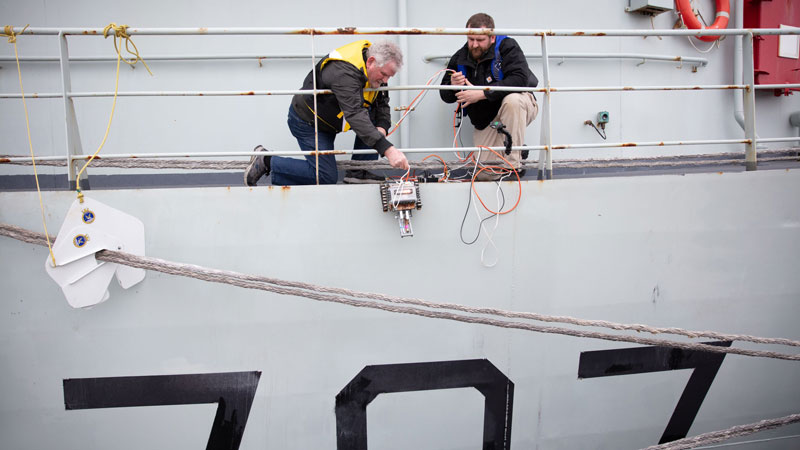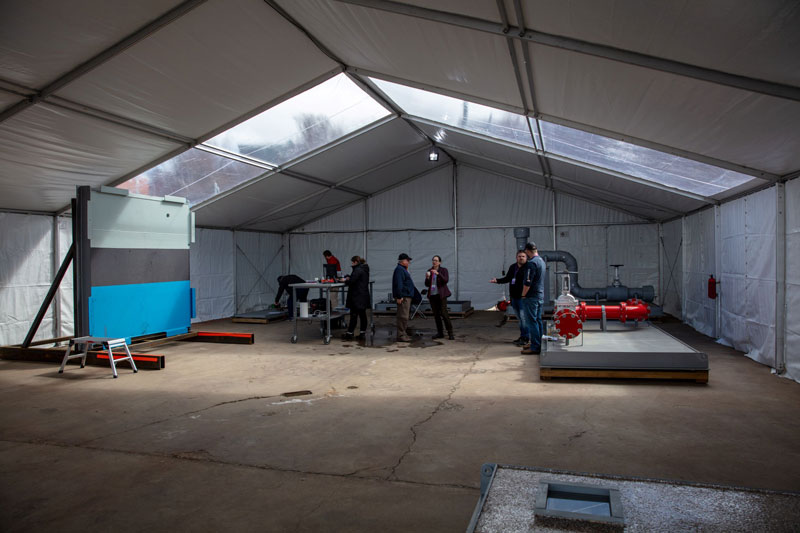The Innovation for Defence, Excellence and Security (IDEaS) program completed the Corrosion Detection Sandbox
May 27, 2022 - Defence Stories
What lies beneath: Tech solutions reveal rust behind the paint on Navy ships
This past month, innovators travelled to Dartmouth, Nova Scotia to test their prototype solutions to find rust hiding behind surfaces on Royal Canadian Navy (RCN) vessels, with the goal of reducing time spent in maintenance, extending the life of vessels and saving money, as part of the Innovation for Defence, Excellence and Security (IDEaS) program’s “Rust never sleeps: corrosion detection in ships” Sandbox. This month-long event showcased nine teams of skilled innovators from Canada and the United States to demonstrate their technologies at the Centre for Ocean Ventures and Entrepreneurship (COVE). Rust is an ongoing issue on all vessels and left unchecked can eventually become dangerous.
From April 25th to May 20th, 2022, each team was given three to five days to test and refine their prototypes while receiving valuable feedback from defence subject matter experts.
In order to evaluate the technology, the participants had to find rust that the experts had hidden in test stations, including inside pipes, behind walls and a submerged scenario for underwater testing.
After calibrating their equipment, participants put their drones, magnetic scanners and other devices to the test to find corrosion in real life scenarios. Docked at the COVE facility, the HMCS Goose Bay provided the teams with new obstacles: working around existing equipment and in narrow spaces. Participants were impressed by the thoroughness of simulated environments and support provided by the IDEaS team. They were also grateful for the opportunity to see and experience how challenging it is to detect rust on Navy ship surfaces and learn more about the RCN’s needs.
From a defence perspective, having access to this technology represents valuable advancements in this domain. As it stands, detection of corrosion on ships can be a time consuming and often intrusive process. Areas where corrosion is suspected need to be inspected visually and in some cases be taken apart for further inspection before being repaired. This is expensive and keeps vessels docked. The opportunity to witness new and existing applications in corrosion detection may redefine and reshape the future of ship maintenance for the Department of National Defence and Canadian Armed Forces.
The Corrosion Detection in Ships Sandbox is a tangible example of the IDEaS program’s ability to enhance defence capabilities while contributing to the growth of the innovation ecosystem. The various models used during the Sandbox will be relocated to research centers and academic institutions across Canada where they will continue to benefit Canadian innovators.
Visit the IDEaS website for more information on the Sandbox.

Caption
Crawford Technologies and Applications testing their solution on the HMCS Goose Bay.
“We were followed by interested, qualified, motivated, and focused Sandbox’s personnel during the whole week. This was very valuable experience in a relaxed and friendly atmosphere.” - Matt Klein, co-founder, Visiooimage inc, Infrared Vision Systems for NDT
“The CDIS Sandbox gave us the opportunity to test our technology on an actual problem plaguing our armed forces. We were able to augment our dataset with real-world data that will be used to increase the accuracy of future corrosion detection models.” – Francis Doumet, founder, Metaspectral

Caption
Test stations at the CDIS Sandbox hosted at COVE.